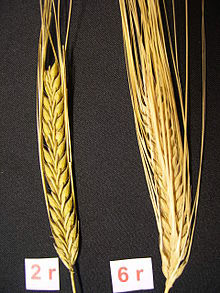Grain grading is a tricky topic. It is important to understand how the USDA classes grain for sale, and what the differences are when buying barley. This blog covers what each USDA grade means, and how barley is categorized. First, barley is graded on a 5 point scale depending on several factors. These factors include test weight, the percent of sound barley, and the percent of damaged kernels in the sample. This blog will focus on food and feed barley, not used for malting. This is because malting barley has different grading standards.
As the grading process begins, barley is split up into three categories; six row barley, two barley, and barley. This may seem like a silly distinction, but barley kernels are sorted based on the row count for a few reasons. First off, there is a taste difference. Secondly, two row barley contains less carbohydrates and six row barley contains more protein. Because of these differences, it’s important to sort the barley in order to best utilize it. In order to classify as two-row or six-row barley, the sample must be 90% of the specified kind. If the barley is mixed, and their is more than 10% of the other type, it will simply be classified as barley.

After the barley has been sorted into subclasses, it is further sorted into grades. Barley is graded on a 1 to 5 scale, with 1 being the most desirable and 5 being the least. This is determined by test weight, percent of sound barley, and the percent of undamaged barley in the sample. Minimum and maximum limits work to ensure barley quality. Barley grading is a critical part of ensuring high quality barley for buyers. These standard help ensure that the best barley finds it’s way into food. And that suitable barley goes to other purposes like feeding livestock. In short, these standards help buyers and sellers best market and use barley.
